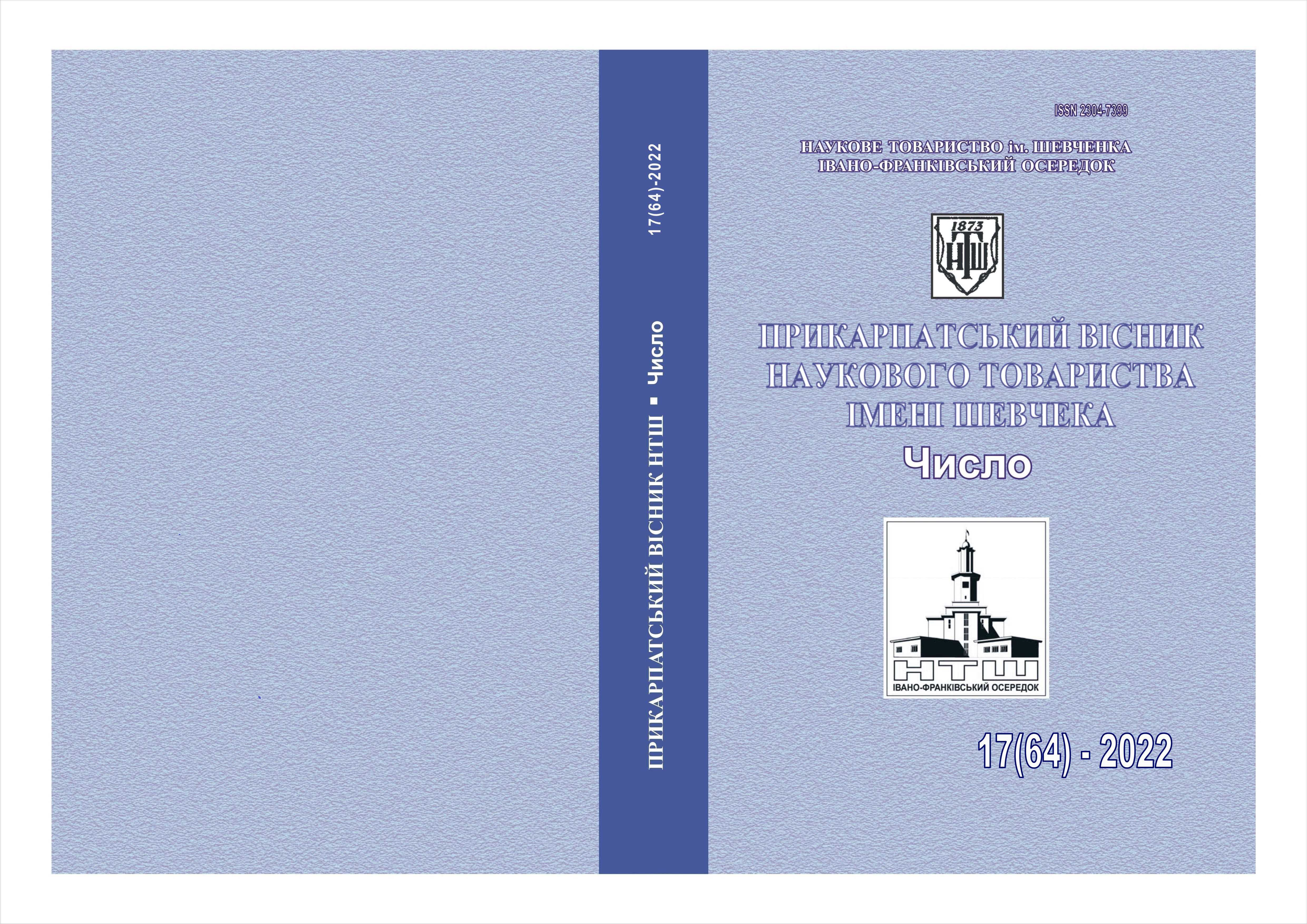USING A COMPONENT APPROACH IN CALCULATING PARAMETERS OF PROPAGATION OF AN ULTRASONIC GUIDED MODE
DOI:
https://doi.org/10.31471/2304-7399-2022-17(64)-96-107Keywords:
ultrasound, guided waves, modelling, finite elements, heterogeneity, elastic medium.Abstract
The paper proposes the development of components of the control system with distributed parameters, which allow the use of the type of ultrasonic waves that propagate along the pipe wall and are called guided. The peculiarity of such waves is their ability not to fade over significant distances compared to bulk ultrasonic waves. The mathematical description of ultrasonic wave propagation has been described simply as propagation in a plate with a known height. Fluctuations of the elementary volume of the elastic medium were described by Euler's equation and Hooke's law and are presented as a system of two differential equations describing longitudinal and transverse fluctuations of the elementary volume. The geometric construction of the model is created in a separate component, which can parametrically describe shapes and make a union by applying logical methods, for example, logical union, subtraction, etc. To solve the model, zero initial conditions have been applied. A table-specified generating signal that interpolates, and boundary conditions along the edges of the plate as an absorbing layer have been set. The absorbing layer is modelled by adding significant system scaling. Also, the concept of an absorbing layer includes a frequency filtering mechanism to filter out the high-frequency component. The calculation of built model by finite elements approach was carried out for two cases: without homogeneity and with homogeneity. The comparison of the obtained results is shown graphically. The possibility of calculating the back propagated signal from heterogeneity has been revealed. Also, an analyse the stages of creation and propagation of various wave types in an elastic medium has been shown.
Keywords: ultrasound, guided waves, modelling, finite elements, heterogeneity, elastic medium.
References
Zeebaree, S. R., Shukur, H. M., Haji, L. M., Zebari, R. R., Jacksi, K., & Abas, S. M. (2020). Characteristics and analysis of hadoop distributed systems. Technology Reports of Kansai University, 62(4), 1555-1564.
Balasubramaniam, Krishnan, and Suresh Periyannan. "Ultrasonic waveguide technique for distribute sensing and measurements of physical and chemical properties of surrounding media." U.S. Patent Application No. 16/726,123.
Hosten B. Finite elements methods for modeling the guided waves propagation in structures with weak interfaces / B. Hosten, M. Castaings // Journal of the Acoustical Society of America. – 2005. – Vol 760. – P. 142 – 149. - ISSN 0001-4966.
B. R. Ibrahim, S. R. M. Zeebaree, and B. K. Hussan, “Performance Measurement for Distributed Systems using 2TA and 3TA based on OPNET Principles,” Science Journal of University of Zakho, vol. 7, no. 2, pp. 65–69, Jun. 2019, doi: 10.25271/sjuoz.2019.7.2.603.
Lyutak, I. Z., Z. P. Lyutak, and A. V. Khamurda. "Веб-орієнтована компонентна система контролю трубопроводів ультразвуковими спрямованими хвилями." Methods and devices of quality control 1 (46) (2021): 63-74.


